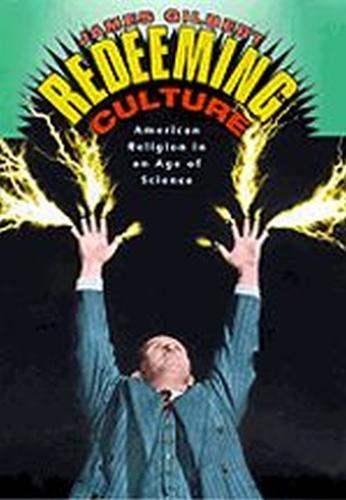Full Product Details
Author: James Gilbert
Publisher: The University of Chicago Press
Imprint: University of Chicago Press
Dimensions:
Width: 15.80cm
, Height: 3.00cm
, Length: 23.50cm
Weight: 0.720kg
ISBN: 9780226293202
ISBN 10: 0226293203
Pages: 418
Publication Date: 21 June 1997
Audience:
College/higher education
,
Professional and scholarly
,
Undergraduate
,
Postgraduate, Research & Scholarly
Format: Hardback
Publisher's Status: Out of Stock Indefinitely
Availability: Out of stock

Reviews
An impressionistic but memorable account of the mid-century negotiations between religion and science in American culture. Gilbert's (History/Univ. of Maryland) study begins with the Scopes trial in 1925 and culminates in 1962's Space Age World's Fair in Seattle. These four decades were fraught with great changes in the scientific community: the discovery of atomic fission, the postwar apotheosis of scientists as the saviors of an uncertain global culture, and then the McCarthyite suspicion of scientists as elitist traitors. Gilbert does a fine job of tracing these changes and chooses engaging examples to explore Americans' cautious enchantment with science through the 1960s, ranging from fashionable speculation about UFOs to the popularity of Frank Capra's widely seen documentary Our Mr. Sun. Gilbert's treatment of religion, however, leaves many questions unanswered. He fails to define important religious denominational differences, speaking broadly of American religion. Also, it is curious that he uses many examples of fundamentalists' dialogue with modern science as indices of the mood of American culture; since fundamentalists tend to define themselves against what they perceive as popular culture, any conclusions drawn from their example should be regarded with caution. Moreover, Gilbert neglects to mention that religion, like science, changed dramatically in the tumultuous years covered by this study. This said, he does pull some extraordinary examples of religious (mostly conservative) appropriations of scientific tools and discourse. In the early '50s, for instance, the evangelical Moody Institute of Science created high-tech science films for distribution to air force bases, in a remarkable instance of government promotion of religion. The Moody films used stunning time-lapse photography and the latest film technology to proclaim a traditional Christian tale of creation, sin, and redemption. A provocative and useful study. (Kirkus Reviews)
Author Information
James Gilbert is professor of history at the University of Maryland. He is the author of ten books, including Perfect Cities: Chicago's Utopias of 1893 and Men in the Middle: Searching for Masculinity in the 1950s, also published by the University of Chicago Press.



